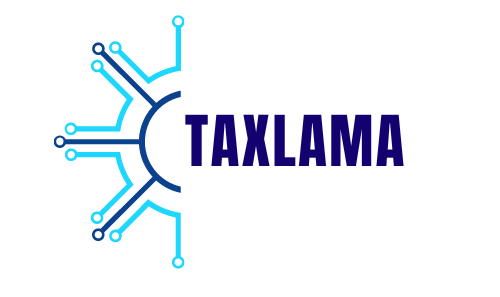With the increasing scope of podcasts over the last decade, creators are getting a new point of view and direction for sharing their experiences to entertain the audience, internationally. If you also want to start a podcast, presenting your unique content to the audience, then there is everything you should know about planning and promotion for the show.
Things to Keep in Mind Before You Start A Podcast
1. Find Niche for a Podcast
Before delving into the technical part of podcasting, one essential decision is to determine the category and the niche of your podcast. This will define the theme and identity of the subject as well as the purpose so that your audience is also defined.
Key Queries to Consider:
- What are you passionate about?
Your enthusiasm for the subject will keep you motivated.
- Who is your target audience?
Define your listener demographic and what they’re looking for.
- What is your podcast’s unique value?
In a crowded market, standing out requires offering something different.
Some ideas to start a podcast: If you are knowledgeable in health and wellness, you should create a podcast focused on mental health. If you’re a tech enthusiast, you might explore emerging technologies or startups.
2. Schedule Your Podcast Episodes
Once you have planned out your interest and the niche of your focus to start a podcast, now plan your episode. Start developing a podcast format, episode length, and frequency of releases.
Common Podcast Formats:
- Solo Shows: One person speaks directly to the audience.
- Interviews: The host interviews guests, which can help boost credibility and expand your reach.
- Panel Discussions: Multiple guests share their insights in a discussion.
- Narrative Storytelling: Uses scripted storytelling to engage listeners.
Tips for Episode Planning:
- Create an outline: Plan the key topics you want to cover in each episode.
- Keep it consistent: Decide on a regular release schedule (weekly, bi-weekly, etc.) to build listener loyalty.
- Add structure: Consider intro music, segment breaks, and a closing segment to give your show a professional feel.
3. Get The Equipment
The equipment can range from basic to professional. You can start with getting essentials for making it clear and engaging audio.
Basic Podcasting Equipment:
- Microphone: A good quality microphone, do your research
- Headphones: Make sure you get quality headphones to help monitor audio levels and ensure clean sound during recording.
- Pop Filter: This filter reduces popping noises from sharp consonants (like "P" and "B").
- Recording Software: Tools like Audacity (free) or Adobe Audition (paid) allow you to record and edit your podcast easily.
- Hosting Platform: Choose a reliable podcast hosting service to upload and distribute your episodes to major podcast directories
4. Record and Edit Your Podcast
After the equipment and the niche, it's time to line up some content and record the podcast. You can choose chose a quiet, echo-free space to ensure the best sound quality. If possible, use an external recording device instead of relying on built-in microphones in laptops or smartphones, as this will help you achieve a more professional sound.
Tips for Recording:
- Test your setup: Record a short test clip to ensure all equipment works properly.
- Stay on topic: Stick to your episode outline to avoid rambling.
- Speak clearly: Enunciate your words and keep your tone conversational.
Once you’ve recorded your podcast, it’s time to edit. Editing allows you to cut out mistakes, tighten up pacing, and add any music or sound effects. You can hire a transcription virtual assistant to help you in this process.
Popular Podcast Editing Tools:
- Audacity: Free and user-friendly, with robust editing features.
- Transcription: use the virtual assistant transcription services to get this done professionally
- GarageBand: Ideal for Mac users, with intuitive podcast editing functions.
- Adobe Audition: Paid, professional-level software for advanced audio editing.
5. Compelling Podcast Cover Art for Branding
The identity of your podcast is the cover and it's the first thing your potential listeners will see, so it needs to be exclusive and represent your show and originality. Many tools like Canva offer the design of eye-catching cover art.
Additionally, make sure to develop consistent branding for your podcast, including:
- Show name: Short, memorable, and descriptive of your niche.
- Intro/Outro Music: Set the tone for your podcast and create a sense of familiarity.
- Tagline: A short phrase that summarizes your show’s purpose.
6. Publish and Distribute Your Podcast
Make sure to do your research and list the distributing platforms where you will publish the podcast. As mentioned earlier, you’ll need a podcast hosting service to store and distribute your audio files. Hosting platforms generate an RSS feed for your podcast, which allows podcast directories like Apple Podcasts and Spotify to display your episodes.
Popular Podcast Directories:
- Apple Podcasts: The largest podcast directory with millions of listeners.
- Spotify: A rapidly growing platform for podcast discovery.
- Google Podcasts: Ideal for reaching Android users.
7. Transcription and Accessibility
One of the best ways to make your podcast more accessible and SEO-friendly is by providing episode transcripts. Transcribing your podcast ensures that your content is accessible to hearing-impaired audiences and boosts discoverability through search engines.
You can either transcribe episodes manually or hire a transcription virtual assistant to handle the task. Many podcasters opt for virtual assistant transcription services to save time and maintain accuracy, especially for longer episodes.
Transcriptions also allow you to repurpose your content into blogs, show notes, and social media posts, extending your reach across different platforms.
8. Promote Your Podcast
Now that you have started the podcast, it's time to get the promotions. Make the following key points strategies:
- Use Instagram, Twitter, TikTok, and Facebook to engage with your audience and share episode highlights.
- Get featured on other podcasts in your niche to cross-promote and reach new audiences.
- Optimize your podcast show notes with relevant keywords and use transcriptions to improve search rankings.
- Build an email list and notify your subscribers when new episodes drop.
One can also get the transcription virtual assistant to help transcribe episodes for easy promotion through blogs and newsletters.
9. Monetize Your Podcast
Get some monetization opportunities once you start getting the attention. There are several ways to generate income from your podcast:
- Once you start a podcast getting brands to pay you to promote their products during your episodes is also a significant milestone.
- Offer exclusive content or early access to your episodes through paid memberships.
- Recommend products relevant to your audience and earn a commission for each sale made through your referral links.
Conclusion
If you plan to start a podcast requires careful planning, quality content, and consistent promotion. From choosing your niche and equipment to hiring a Hire Transcription Virtual Assistant for accessibility and SEO, each step contributes to building a thriving podcast. With the right strategy and dedication, you can grow your listener base and potentially monetize your podcast over time.




